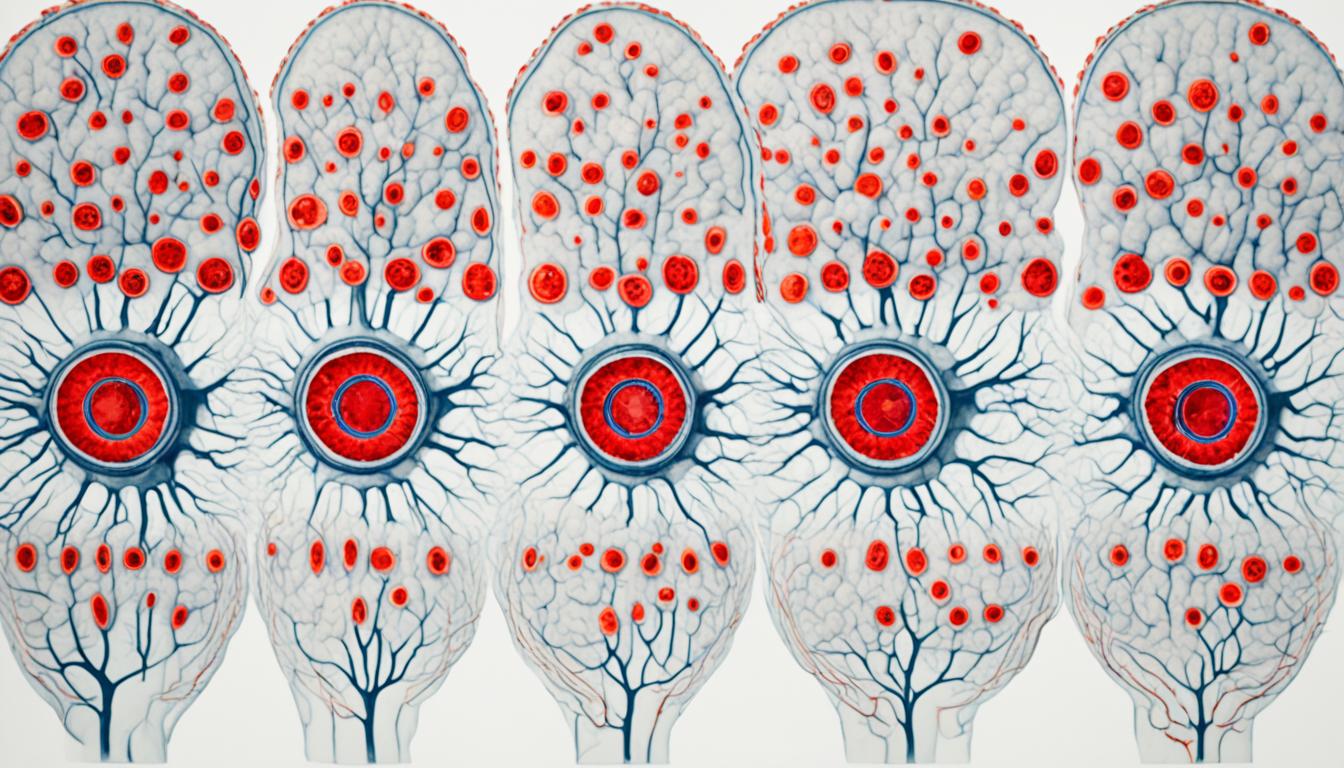Posterior cortical atrophy (PCA) is a type of disease that affects the brain and nervous system. It mainly impacts the part of the brain at the back. This area is crucial for seeing and understanding what our eyes see. Over time, the brain cells here die, causing visual and cognitive issues.
People with PCA find it hard to read, guess distances, and identify objects or faces. Memory loss and a decrease in thinking skills may also happen. Alzheimer’s disease is the main reason for PCA in more than 80% of cases. Yet, it can come from other brain-related illnesses as well.
These conditions include Lewy body dementia and corticobasal degeneration. The loss of brain cells in the back part affects how we see and understand space around us. So, problems with seeing and making sense of what we see are key signs.
Key Takeaways:
- PCA is a brain and nervous system condition.
- It causes issues like trouble reading and recognizing faces.
- Alzheimer’s disease is a common cause, but other conditions can lead to it.
- The condition affects the back part of the brain, affecting vision and spatial skills.
- Stem cell therapy is a promising treatment for PCA in the future.
Symptoms and Causes of Posterior Cortical Atrophy
Posterior cortical atrophy (PCA) affects the brain’s back portion. It’s key for visual processing and spatial reasoning. Learning about PCA’s symptoms and causes helps with early diagnosis and control.
Symptoms of Posterior Cortical Atrophy (PCA)
PCA symptoms differ but get worse with time. Reading, spelling, and math might become hard. Driving and judging distances can be a challenge.
Recognizing objects and faces and using tools might become difficult. Feelings of anxiety, confusion, and behavioral changes can occur. Memory problems can appear later on.
These signs really impact daily life and independence. If you notice these symptoms, talk to a healthcare expert.
Causes of Posterior Cortical Atrophy (PCA)
PCA is mostly related to a certain Alzheimer’s disease form. It hits the brain’s back, causing cortical atrophy and PCA development.
But, other conditions like corticobasal degeneration and Lewy body dementia can also lead to PCA. These diseases harm brain cells linked to visual processing.
Still, we need more research to fully link Alzheimer’s risk to PCA development.
Comparison of Symptoms and Causes of Posterior Cortical Atrophy
| Symptoms | Causes |
|---|---|
| Trouble with reading, spelling, math, driving, dressing | Form of Alzheimer’s disease affecting the back of the brain |
| Difficulty judging distances, identifying objects, using tools | Corticobasal degeneration |
| Anxiety, confusion, changes in behavior and personality | Lewy body dementia |
| Memory problems (later stages) | Creutzfeldt-Jakob disease |
The table shows common symptoms and causes of PCA. Talking to a healthcare pro is crucial for a correct diagnosis and personalized care.
Diagnosis and Treatment Options for Posterior Cortical Atrophy
Diagnosing posterior cortical atrophy (PCA) is challenging. There’s no single test to confirm it. Doctors look at a person’s cognitive skills, do blood tests, brain scans, and check the nerves. This helps rule out other sicknesses. While there’s no cure for PCA, treatments can help manage its symptoms and make life better.
Doctors often give medicines used for Alzheimer’s disease. These drugs help brain cells work better and reduce PCA symptoms. Physical and occupational therapies are also key. They help people move better and improve their daily life quality.
Stem cell therapy is a new, exciting hope for PCA future treatments. It aims to replace damaged brain cells. This could slow the disease and boost brain function. Thailand stands out as an important place for these treatments. It brings hope to those living with PCA.

